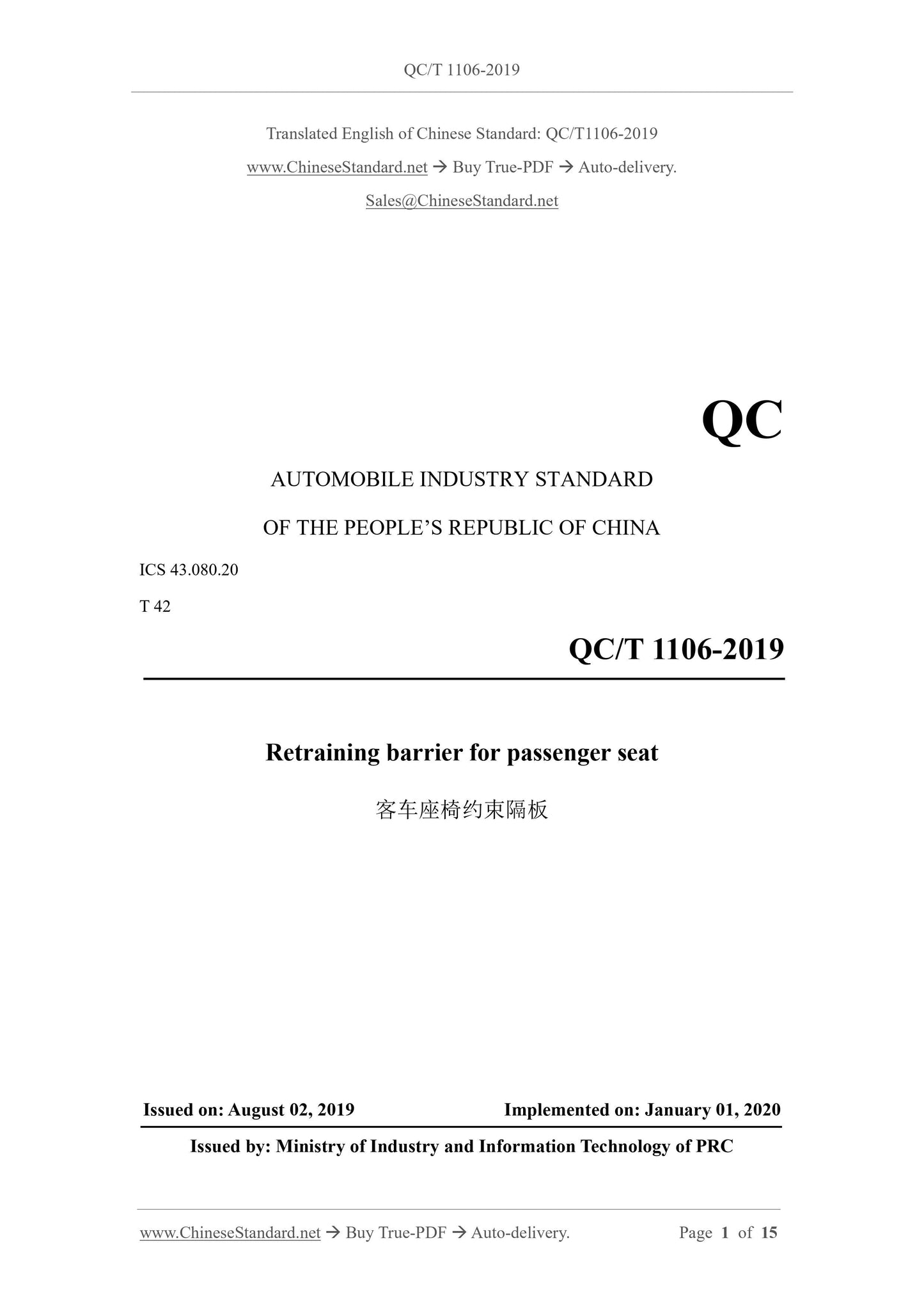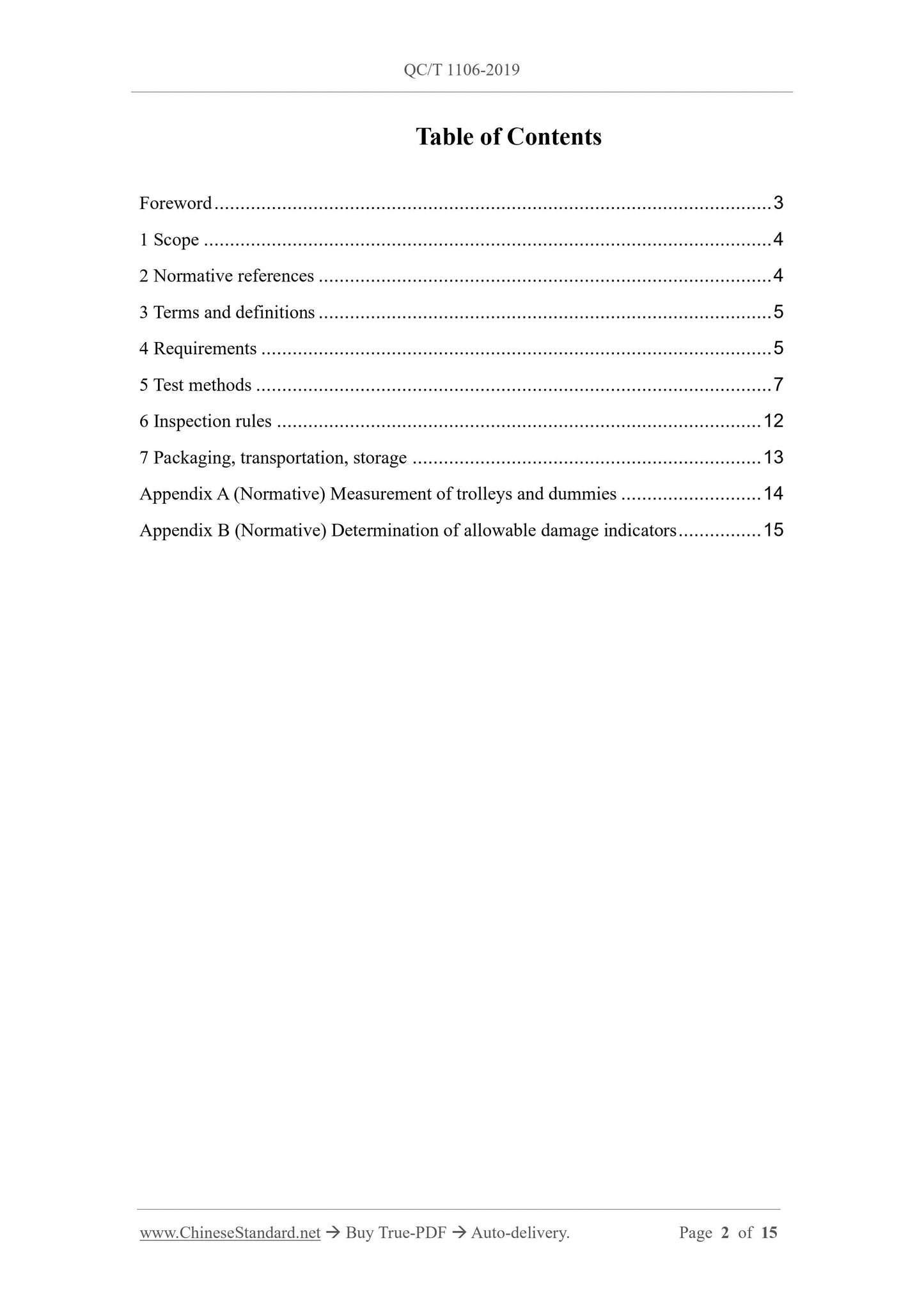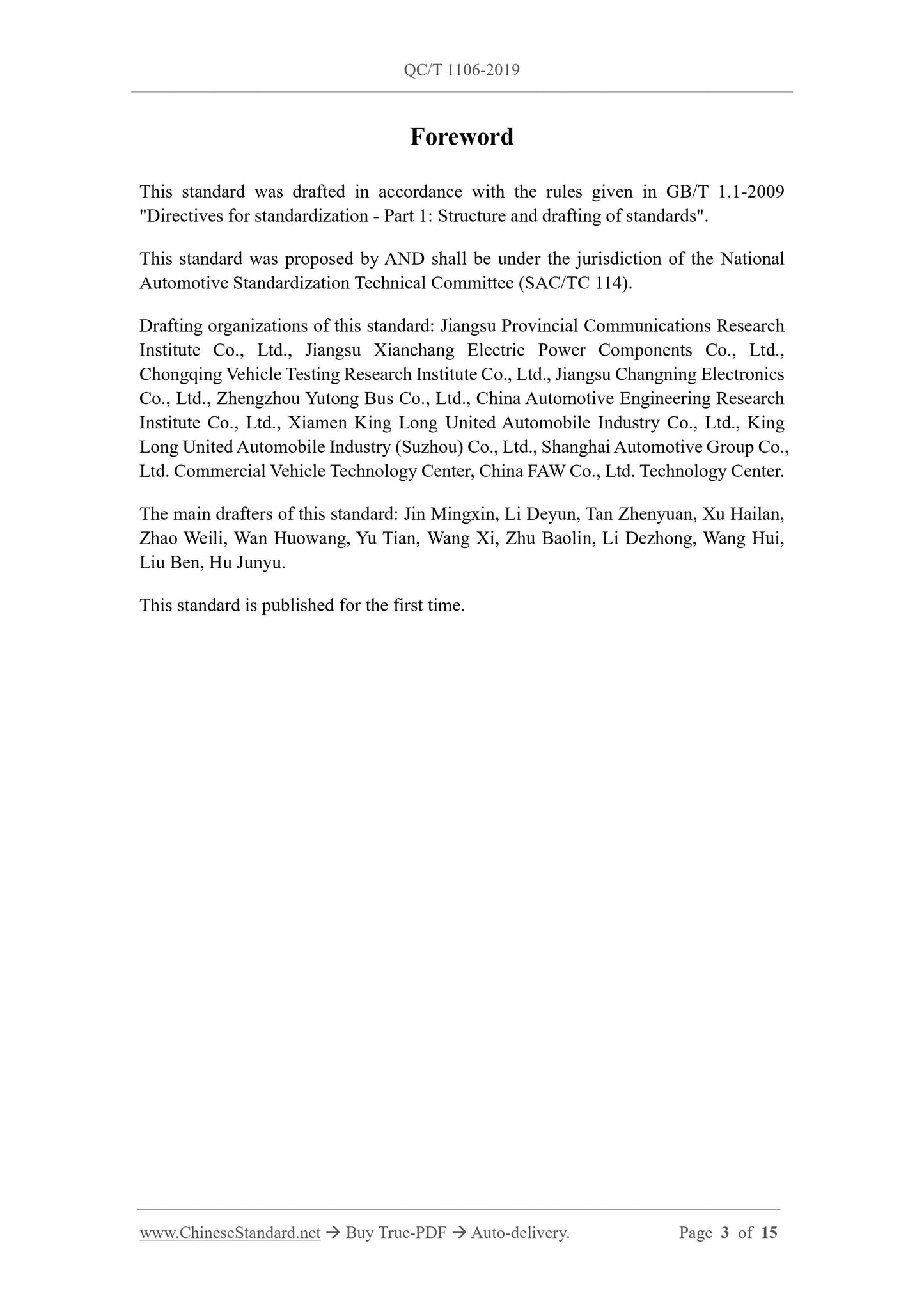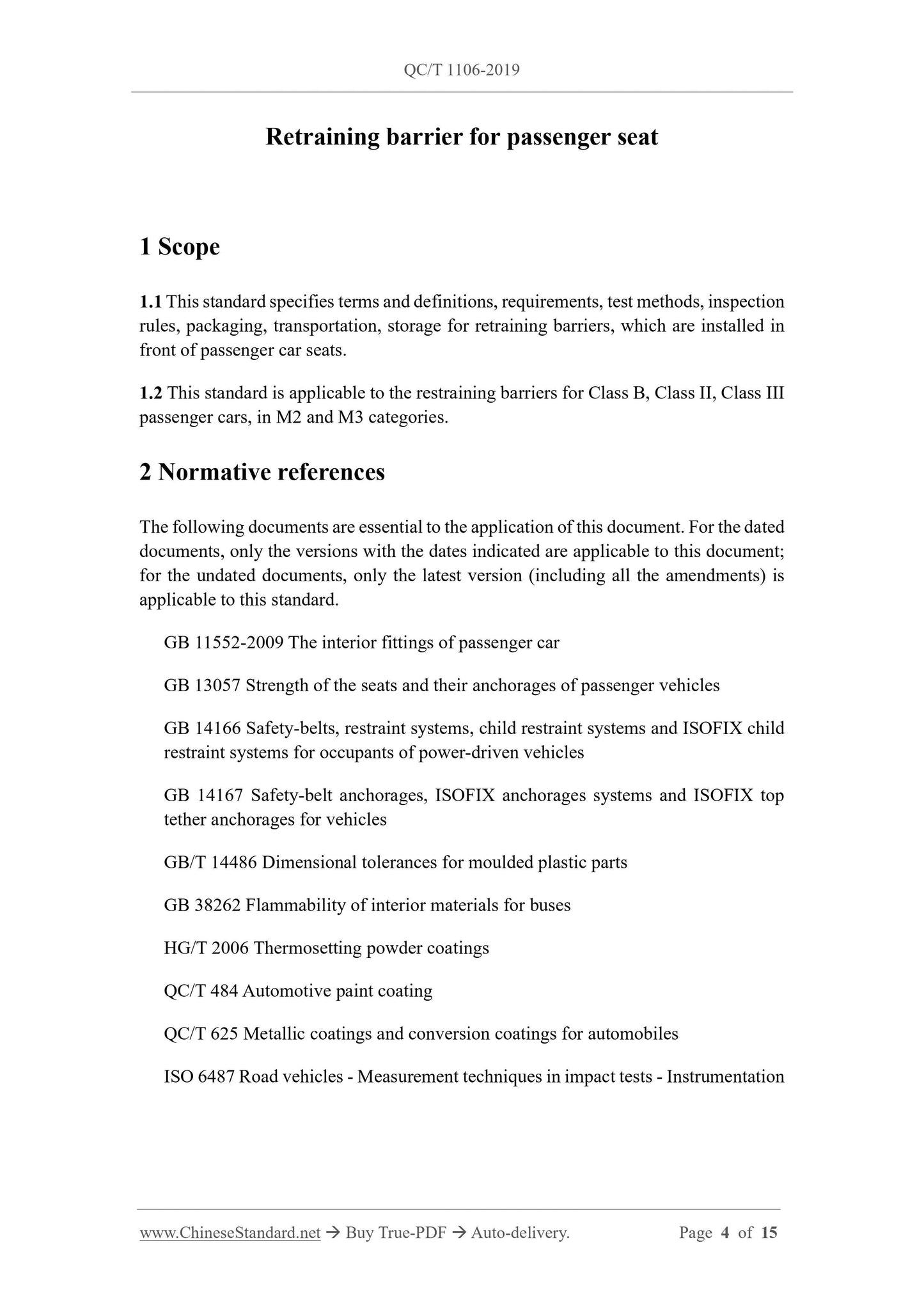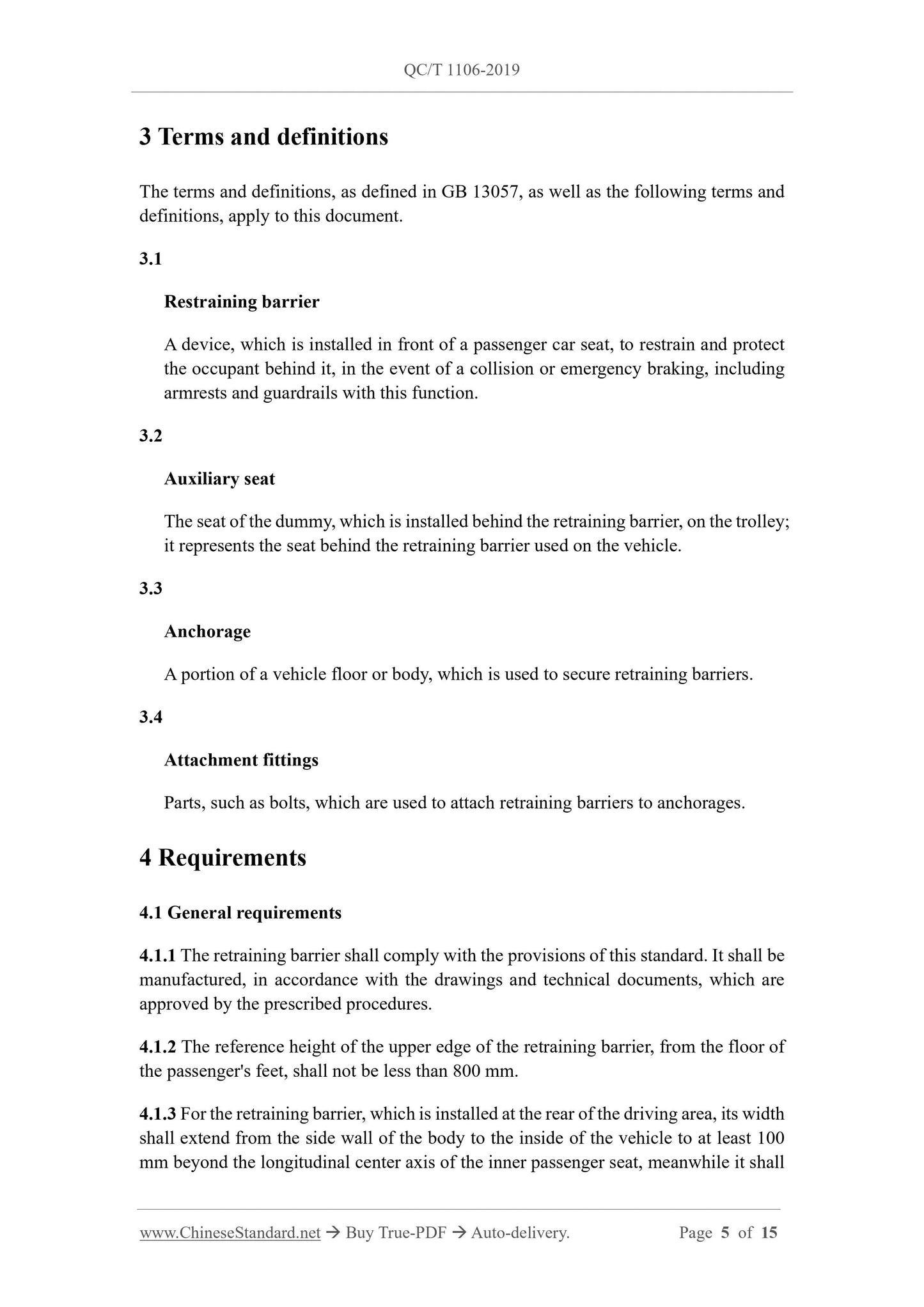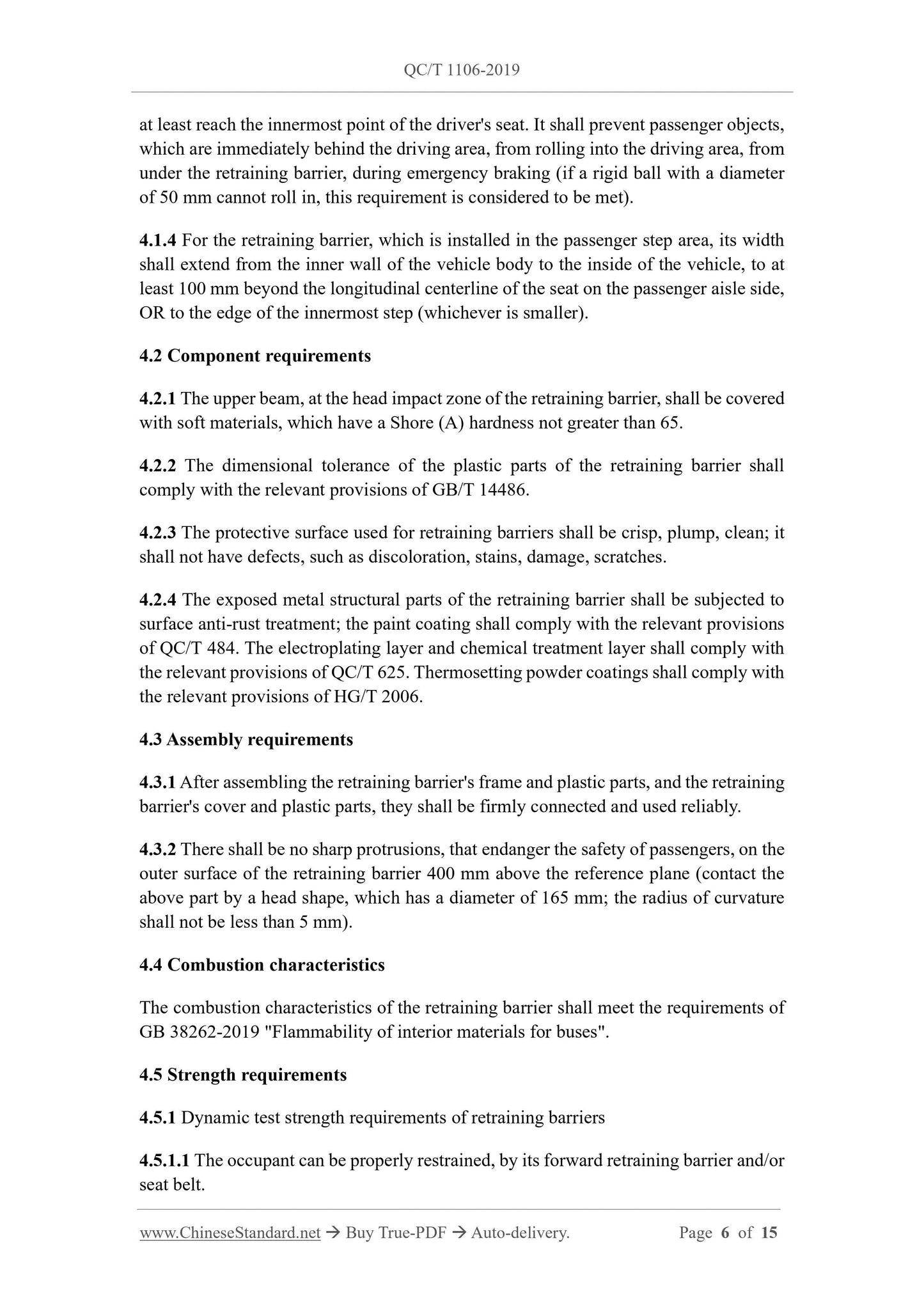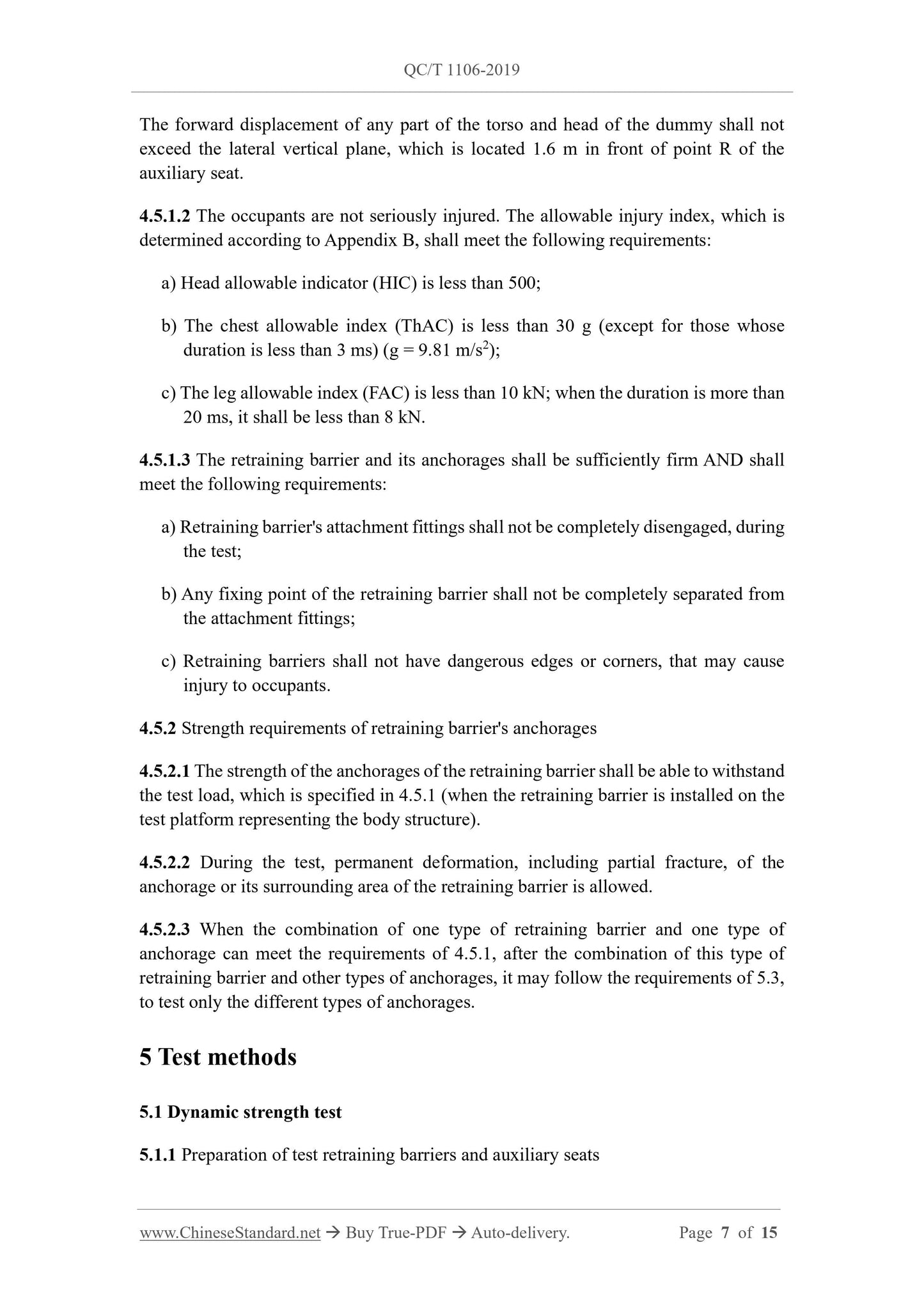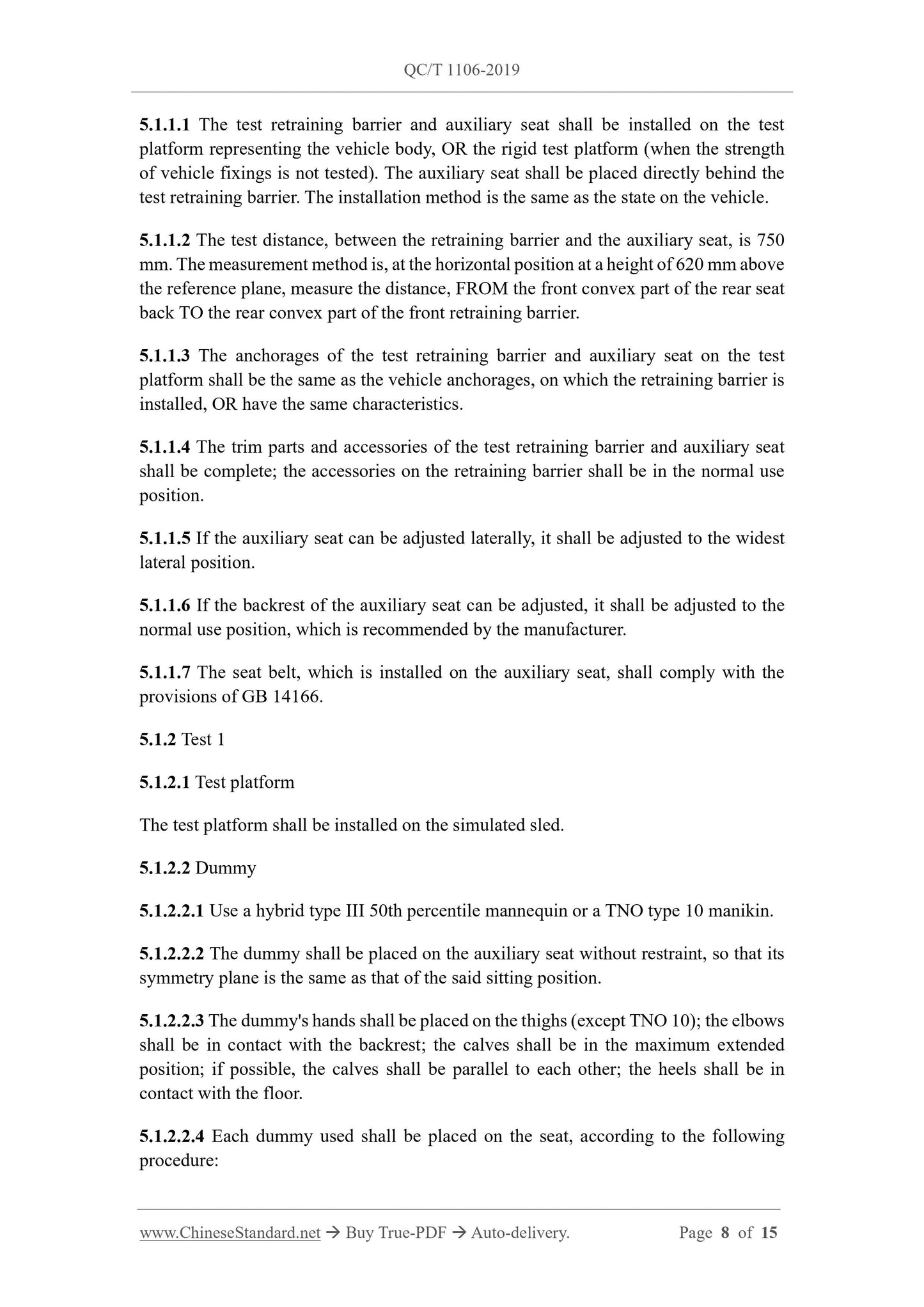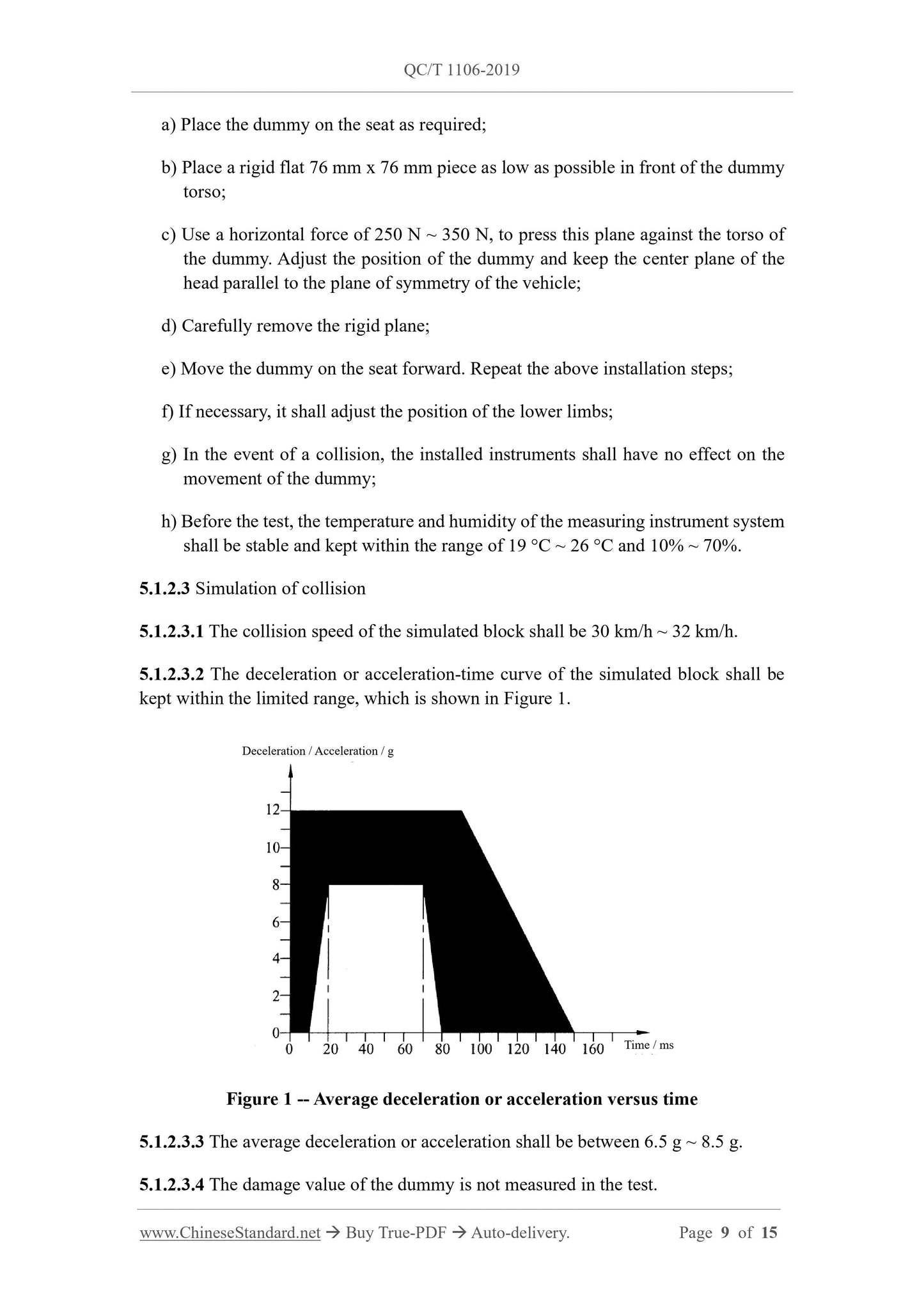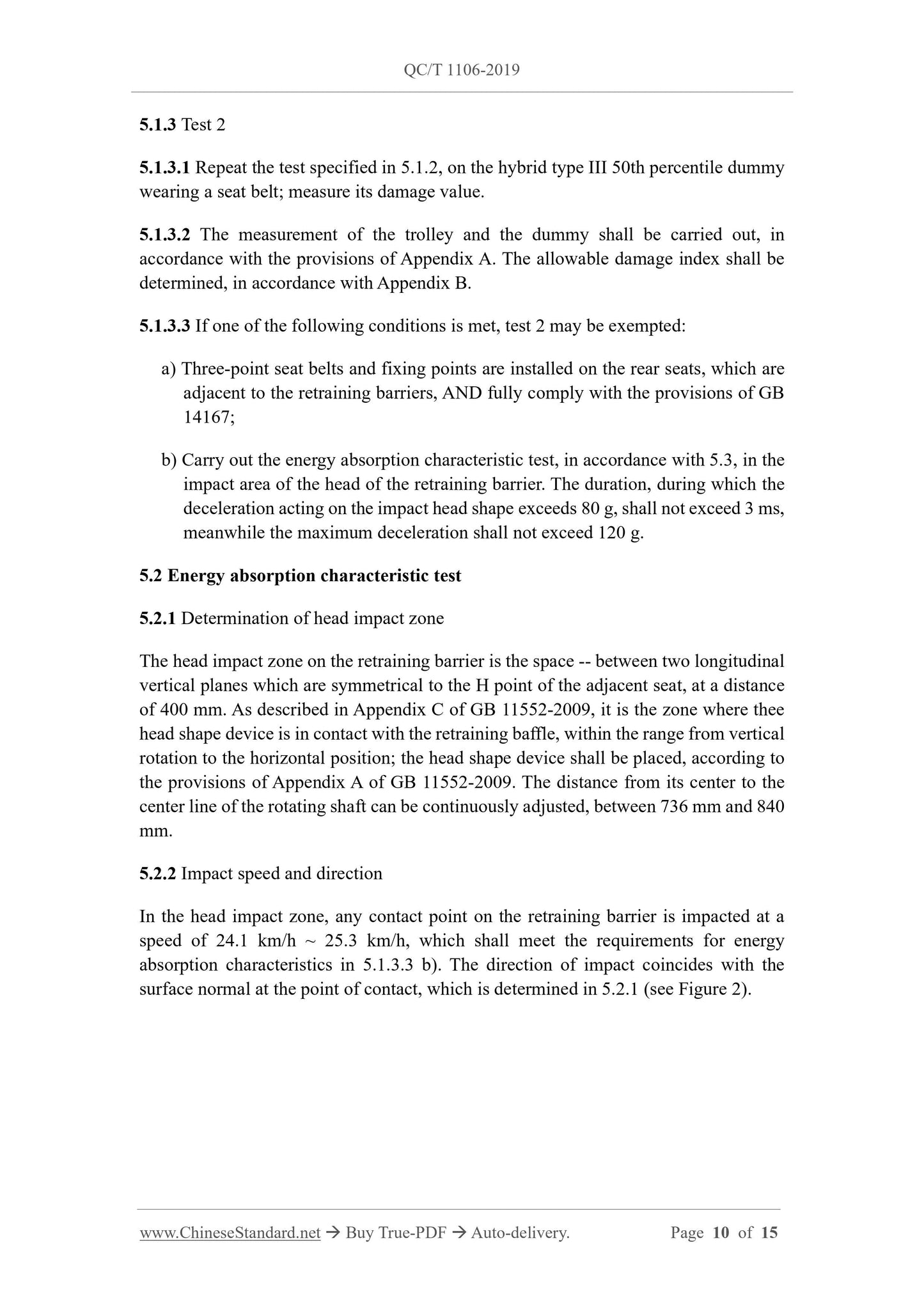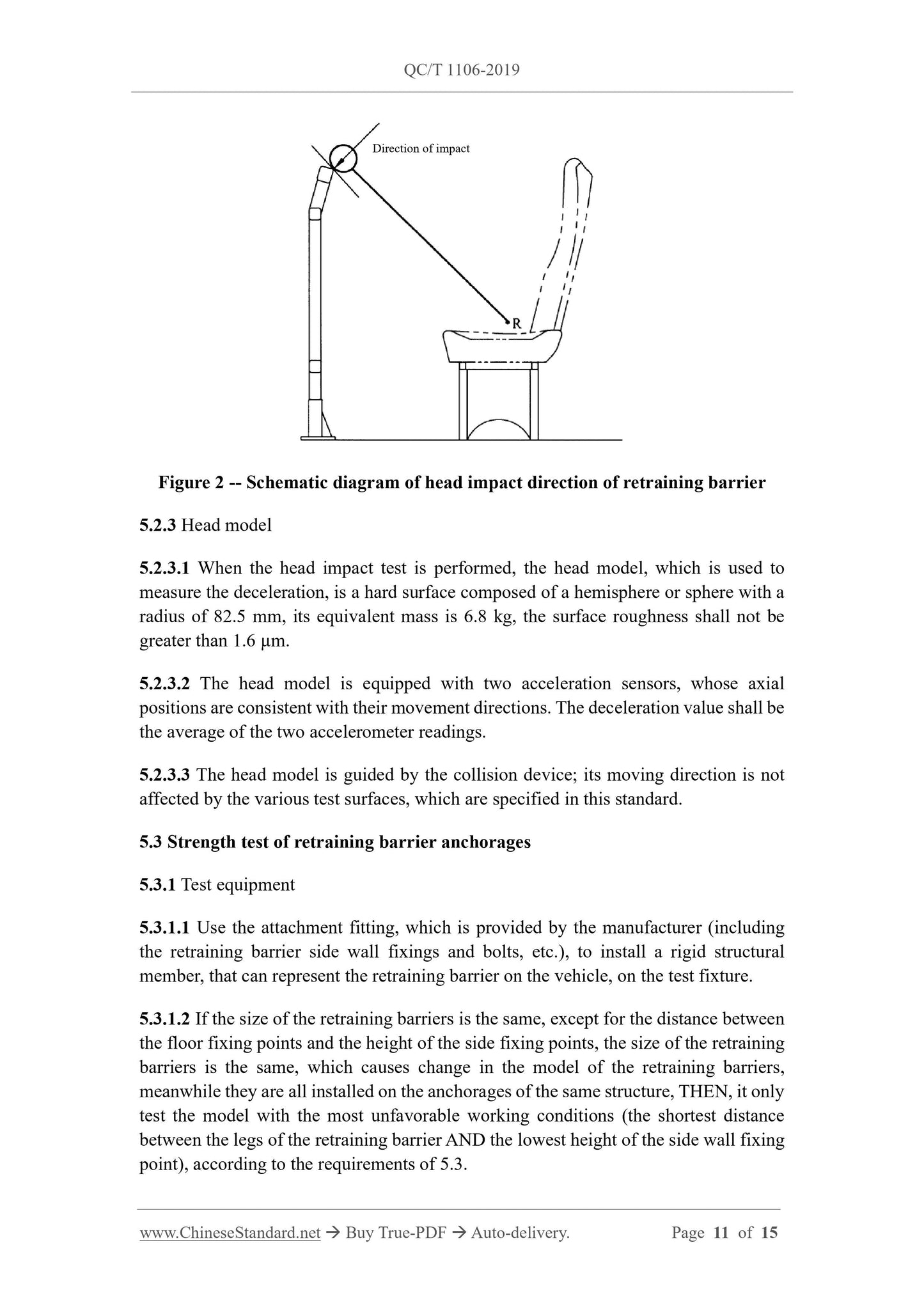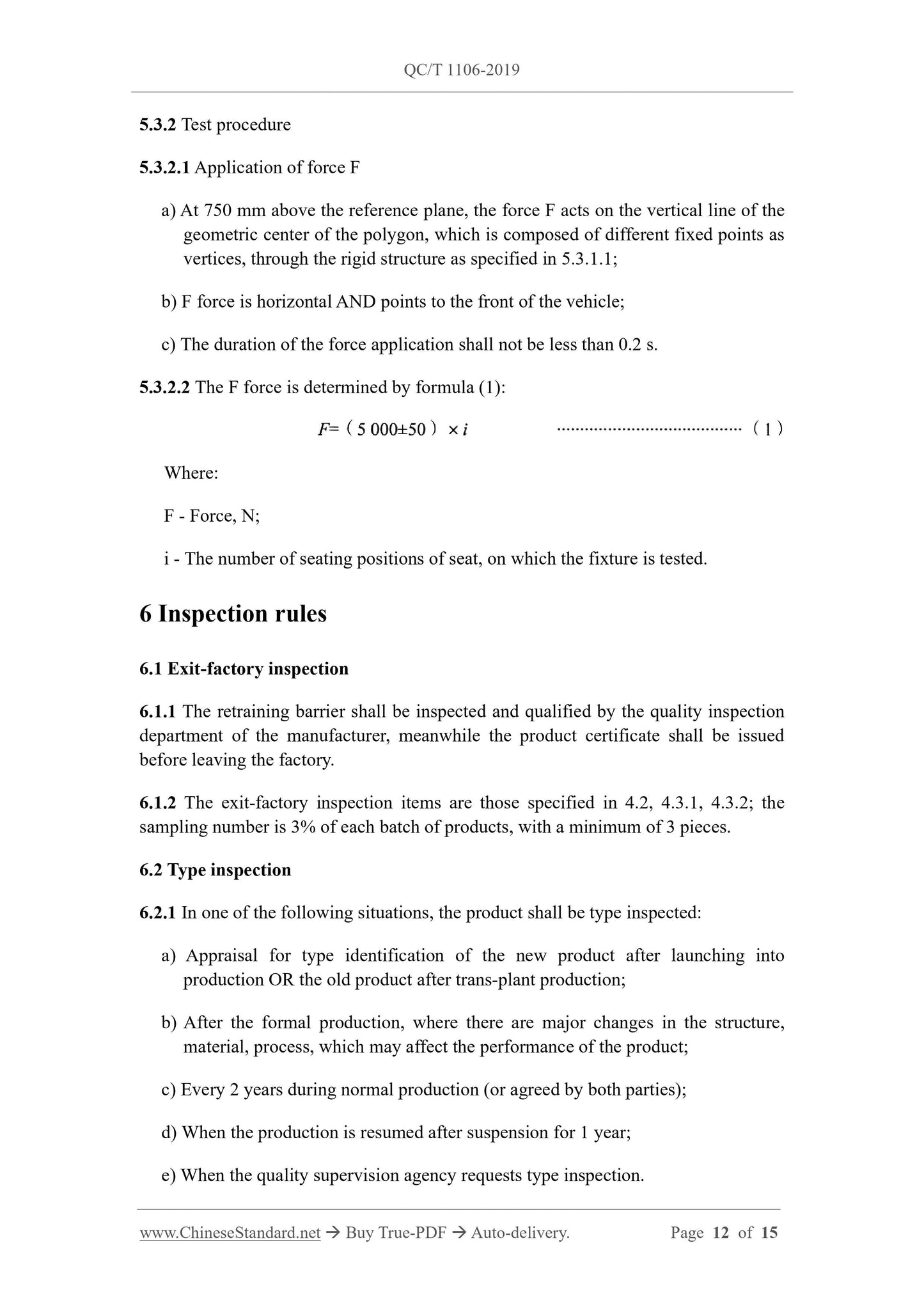1
/
of
12
www.ChineseStandard.us -- Field Test Asia Pte. Ltd.
QC/T 1106-2019 English PDF (QC/T1106-2019)
QC/T 1106-2019 English PDF (QC/T1106-2019)
Regular price
$175.00
Regular price
Sale price
$175.00
Unit price
/
per
Shipping calculated at checkout.
Couldn't load pickup availability
QC/T 1106-2019: Retraining barrier for passenger seat
Delivery: 9 seconds. Download (and Email) true-PDF + Invoice.Get Quotation: Click QC/T 1106-2019 (Self-service in 1-minute)
Newer / historical versions: QC/T 1106-2019
Preview True-PDF
Scope
1.1 This standard specifies terms and definitions, requirements, test methods, inspectionrules, packaging, transportation, storage for retraining barriers, which are installed in
front of passenger car seats.
1.2 This standard is applicable to the restraining barriers for Class B, Class II, Class III
passenger cars, in M2 and M3 categories.
Basic Data
| Standard ID | QC/T 1106-2019 (QC/T1106-2019) |
| Description (Translated English) | Retraining barrier for passenger seat |
| Sector / Industry | Automobile and Vehicle Industry Standard (Recommended) |
| Classification of Chinese Standard | T42 |
| Word Count Estimation | 11,196 |
| Date of Issue | 2019-08-02 |
| Date of Implementation | 2020-01-01 |
| Regulation (derived from) | Natural Resources Department Announcement No. 7 of 2019 |
| Issuing agency(ies) | Ministry of Industry and Information Technology |
Share
